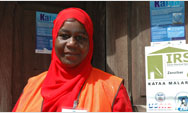Management of Malnutrition
Globally, more than 20 million children suffer from severe acute malnutrition (SAM), including in countries not recently affected by an emergency. This figure is growing due to the rising cost of food. Mortality rates for children with SAM are 5 to 20 times higher compared to well-nourished children, and SAM accounts for about 1 million child deaths each year.
Until recently, the management of SAM has been limited to center-based care with limited coverage. An approach pioneered by USAID (DCHA/OFDA, and GH) and NGO partners, called Community-based Management of Acute Malnutrition (CMAM), brings the services for management of SAM closer to beneficiaries, thanks to the availability of ready-to-use therapeutic foods (RUTFs). CMAM involves timely detection and referral of children with acute malnutrition in the community, outpatient care for SAM without medical complications, and inpatient care for acute malnutrition without appetite or with medical complications, or in infants under 6 months.
USAID supports the integration of CMAM into national health systems and facilitates the introduction and expansion of CMAM through trainings and planning tools. In Ghana, USAID helped establish seven outpatient and two inpatient CMAM centers and trained service providers on the appropriate CMAM protocol. A 2006 USAID-funded study concluded that developing countries can safely and easily produce RUTFs, in many cases with locally available ingredients. USAID also enhances accessibility to CMAM programs by expanding local production of RUTFs.
About 36 million children suffer from moderate acute malnutrition (MAM). In addition to effective infant and young child nutrition programs, children with MAM can be treated at the community level with ready-to-use supplementary foods (RUSFs). USAID supports studies to determine the effectiveness of various RUSF products, including milk- and soy-based RUSFs.
Related Links
- Food and Nutrition Technical Assistance 2
FANTA-2 works to improve nutrition and food security policies, strategies, and programs through technical support to USAID and its partners, including host country governments, international organizations, and NGO implementing partners.
|


